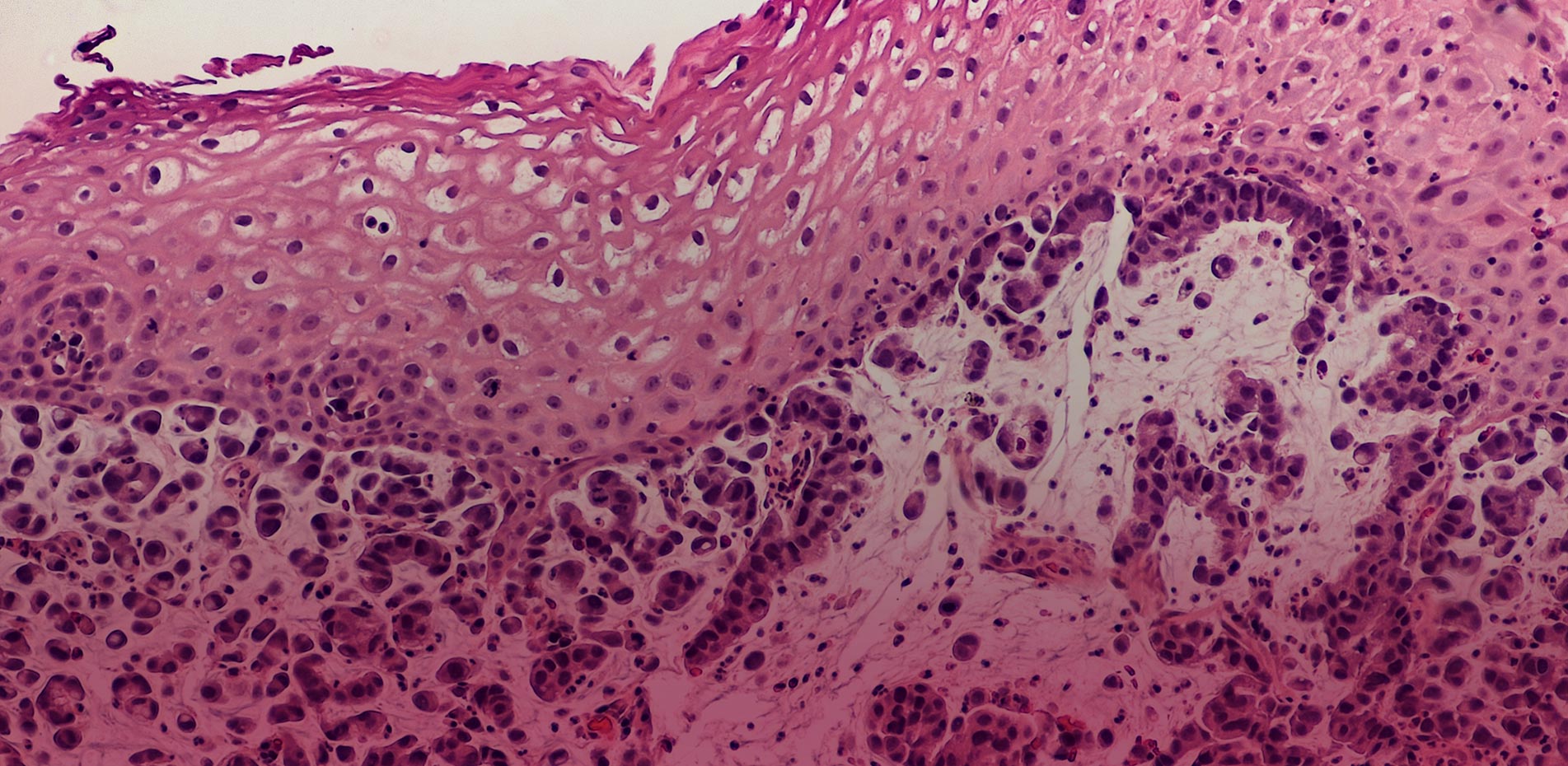
-
A cancer detection
imaging device that is safe
for the human body -
In November 2011, a team of Korean researchers developed a technology that can detect cancer cells without depending on a radioactive material. The technology has been used in the development of a medical imaging device that detects specific diseases, including cancer, by utilizing the location of nano-magnetic particles of iron oxide (Fe3O4). This heralds the emergence of cheaper and safer medical imaging devices than the current ones in the fight to cure cancer.
An X-ray imaging device takes a shot of the human skeletal system for the purpose of diagnosis, while MRI is an anatomical imaging device for measuring the magnetic properties of the elements of the human body in order to diagnosis a disease. PET-CT (Positron Emission Tomography-Computed Tomography), one of the most commonly used devices for detecting cancer, is useful for pinpointing the location of cancer cells. It is optimized for detecting specific diseases, such as cancer, by having the patient drink a radioactive tracer (contrast medium), or by injecting it into the patient, in order to locate radioactive material and trace cancerous cells. However, it has been a source of controversy due to the issue of radiation exposure.
In a bid to eliminate this problem, the research team developed an imaging device capable of locating a cancer without requiring the patient's exposure to radiation. The device does not require the patient to ingest a radioactive contrast medium, but only uses iron, which is safe to the human body, and is discharged within 12 hours in the form of urine. Nano-magnetic particles of iron oxide are injected instead of a contrast medium to identify the location of cancer cells in the body. It is called the “Magnetic Particle Imaging (MPI) system”. Iron oxide particles are not only safe for the human body but can also be used continuously, making them an effective method of tracking and diagnosing chronic diseases.
The antigen or antibody for detecting a specific disease can be coated with iron oxide particles and injected into the human body, whereupon in will adhere to the area affected by a disease. The MPI system provides graphic information on the location of a disease by securing signals from the particles and combining them with 3D spatial information. With the anatomical information obtained from an X-ray device or MRI, this information can be used to pinpoint a disease as well as to diagnose diverse diseases depending on the type of antigen or antibody that adheres to the region.
-

Iron oxide
A compound of steel and
oxygen, existing in 3 types.
FeO, Fe₃O₄, and Fe₂O3.
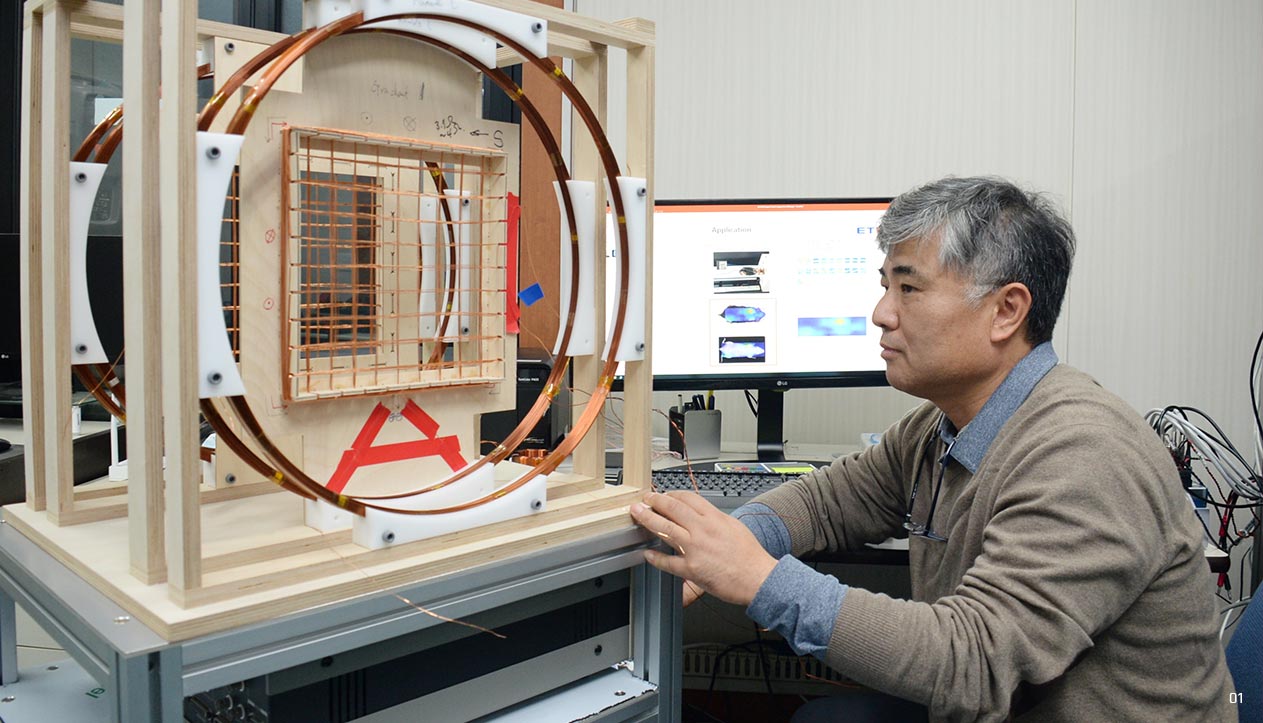
-
01
Dr. Hyo-bong Hong from ETRI's
Intelligent Robot Lab designing
a coil for use in devices
-
ETRI develops
the world's third
successful MPI -
Diverse radioactive devices have been used to date to find out whether specific diseases such as cancer have developed in the human body, including X-ray devices, MRI, and PET-CT.
Of these, the most accurate one is PET-CT. An ETRI research team has been working on the development of a new system to overcome the shortcomings of PET-CT, and has found a way of using iron oxide particles instead of dangerous radioactive materials. Specifically, when an antigen and antibody coated with iron oxide particles are injected around cancer cells, they adhere to the cancer cells, and the system then analyzes physiological signals from the particles. Unlike existing systems based on radioactivity, the fine steel particles and 3D electromagnetic fields are utilized to determine the exact location of a disease.
Many medical imaging companies and organizations around the world are vying to secure source technologies for a method of MPI that uses magnetic nano particles. So far, however, only two of them have succeeded in obtaining images from a live subject. As such, ETRI is only the third institute in the world to develop a medical imaging device based on iron oxide. As it also uses far less power, i.e. approximately 1/100th of competing products, it does not require a cooling system. Most medical imaging systems take up a large aamount of space due to the cooling requirement. Now, the MPI system can be used in much smaller rooms, which also means far lower purchase price for such a system, and the research team expects that their MPI system will cost only 1/20th the price of other products.
-

X-ray
Taking an image of the body by
transmitting X-rays to the human body.
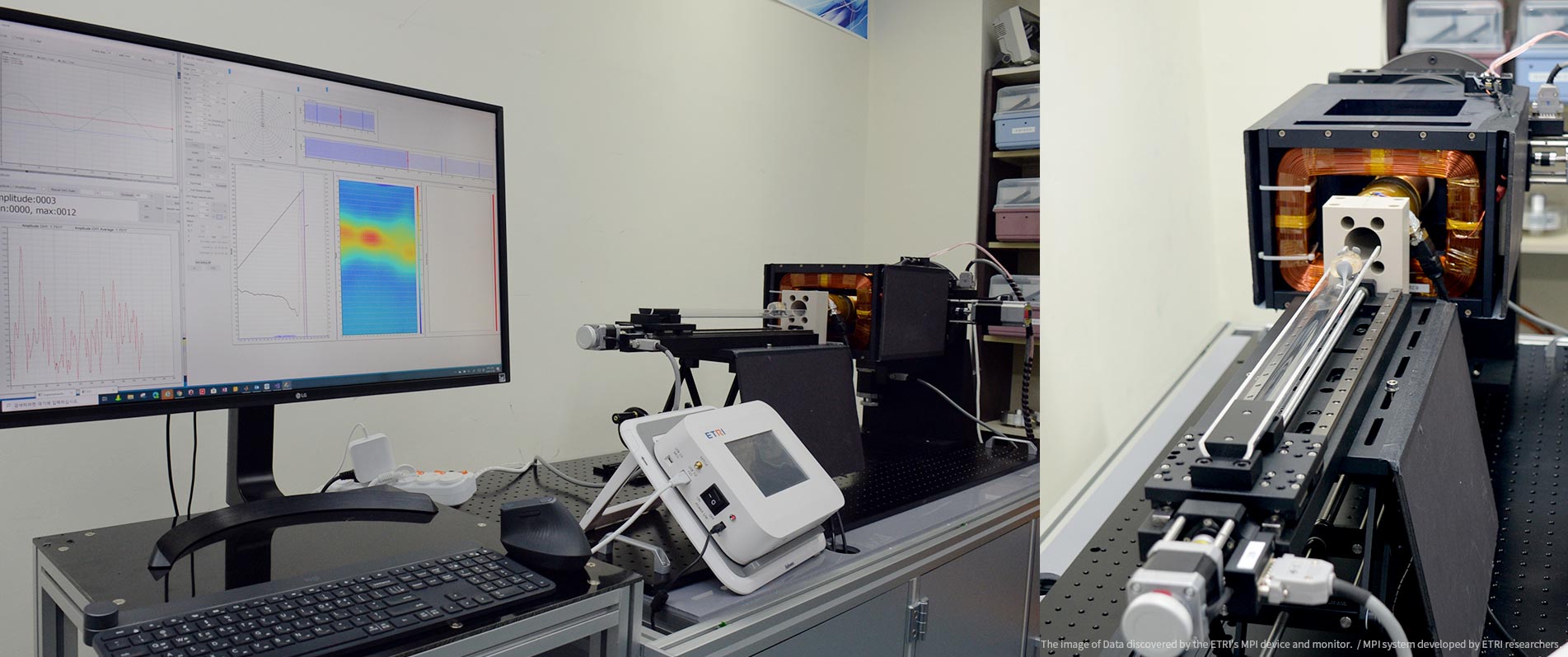
-
ICT for
human safety -
An ETRI research team stated that it had managed to identify and visualize magnetism at a certain location in a 3D space after securing core patents for its Frequency Mixing Magnetic Detection (FMMD) technology and a mechanism for creating and procuring magnetic signals. The team injected nano particles of iron oxide into experimental rats and obtained an image of it with the MPI system. They used that image along with one taken by an X-ray device to pinpoint the exact location of the nano particles. There is still a long way to go before its commercialization, including clinical trials, but eventually the system will play an important part in our lives.
Based on the fact that cancer cells are vulnerable to heat, the research team is planning to apply the technology to hyperthermia. Having discovered that applying specific frequencies to cancer cells via nano particles warms them up, the team will use this fact to determine their locations. This may also lead to a new way of curing cancer. Dr. Hong Hyo-bong from ETRI's Intelligent Robot Lab said, “This technology can be used to detect diverse diseases depending on the antigen or antibody used, and it may turn out to be a cheap and effective alternative method of diagnosis. Ultimately, we plan to develop a device capable of both diagnosis and treatment by utilizing the magnetic field.”
In addition, the team is working with researchers in other countries to develop a technology capable of pinpointing cancer cells by utilizing MRI together with this technology, and by identifying cells of a certain shape. Such efforts should lead to fruitful results and enable everyone to live a safe and convenient life free from the fear of cancer thanks to ICT.
-

MRI
(Magnetic Resonance Imaging)
An imaging device that takes an image
of the human body by forming a strong
magnetic field utilizing a superconductor
(from revised Physics 1).
-
02
Graphics describing the signals from
iron oxide can be used to pinpoint the
location of a disease in 3D.03
Graphics describing how to detect
the location of a disease with the MPI
system by injecting iron oxide
particles into a rat. 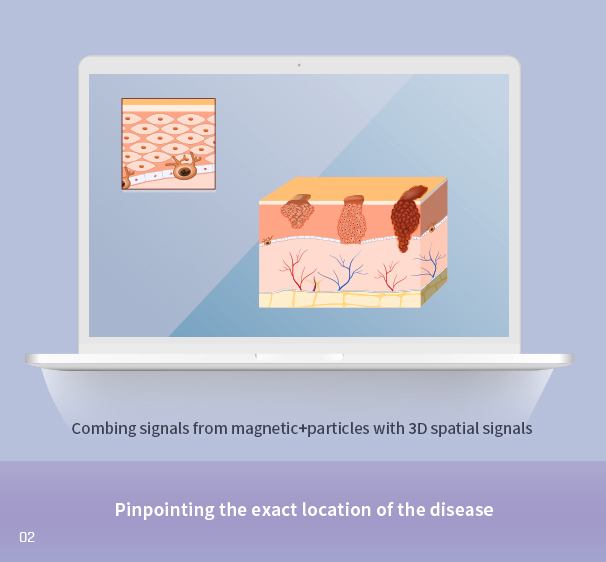
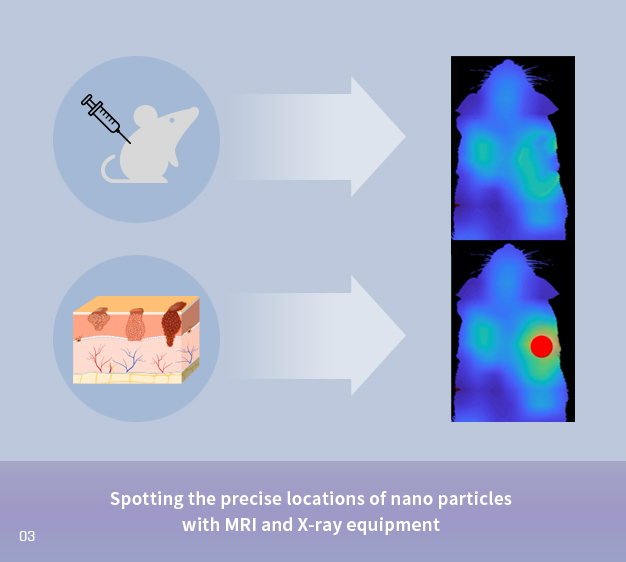
-
Although 5G already plays a significant role in our daily life, many people say that they can’t feel whether it is "out there" or not. That’s because they are not yet convinced that 5G-based applications - such as remote diagnosis, holograms, and autonomous vehicles - will become the reality. So let’s go back to 2007, about one year before the birth of the smart phone. It was just twelve years ago, but now we accept the smart phone as second nature and depend on it to such an extent that we can’t imagine life without one. Like the smartphone that combined music, phone and internet into one device, the era of 5G, which is defined as super connectivity, super speed and super low latency, is clearly approaching, and new services based on 5G will become second nature to us in no time at all withut us even realizing. And it won’t actually matter what those services are.

Author · Kilho, Chong, Director of Public Relations Department, ETRI
